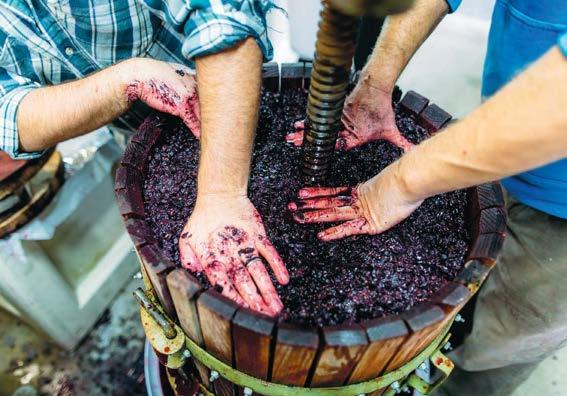
6 minute read
BEHIND THE BOTTLE
BEHIND THE BOTTLE VINTAGE FRIENDSHIPS
Now in its 42nd year, Redwood+Vine is a place for do-it-yourself winemakers
Advertisement
BY AMBER TURPIN PHOTOGRAPHY BY CRYSTAL BIRNS
“Wine made among friends” is how Mike Kubo describes the guiding principle of the Redwood+Vine wine co-op, for which the NASA scientist has served as head winemaker since 2004, leading the Santa Cruz Mountains-based group of do-it-yourselfers from sourcing and crushing fruit to bottling and aging their vintages. “What is best for each other is best for the wine.”
There is a longer and deeper story here that pre-dates Kubo by almost 30 years, beginning in the 1970s when a bunch of UC Santa Cruz grad students in astronomy, including David Soderblom and Jesse Bregman, started going to a wine shop at the Cooper House (demolished following the Loma Prieta earthquake) for the weekly wine tasting. The exposure to different varietals sparked the friends’ interest in the craft, and they decided to give it a go on their own. Their first vintage in 1976 was a Cabernet Sauvignon made in the Bregmans’ garage on Branciforte Drive in Santa Cruz, so they called their enterprise Branciforte Winery.
From crush to bottling, members of the co-op share all parts of the winemaking process
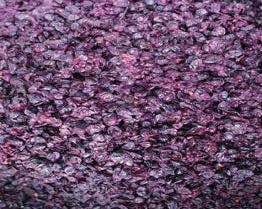
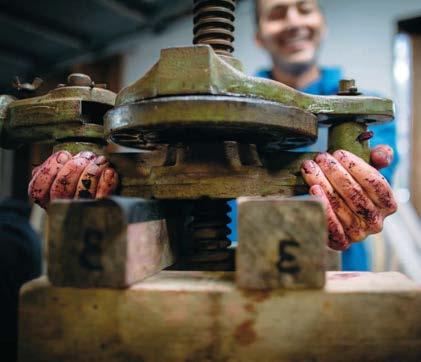
Local poet Ziggy Rendler-Bregman is a founding member of the wine co-op and unofficial historian of the group. She has some of the original labels, notes written down about certain vintages and memories of her children growing up with winemaking in their home space. “The kids loved punching down the cake into the juice,” she recalls. “It was this volcano-like pink foam oozing up, making this sound, like a big witch’s brew...it was the brew of the fall harvest.”
To make things more legally legit and for tax reasons, the group had to come up with some structure. Because it was based at his house, Bregman had the group in his name and was deemed head winemaker. A big part of the appeal of working communally was so the group could split costs of the equipment, barrels, grapes and even label printing. RendlerBregman has prices written down from those years that are incredible. “In 1978 we could get 2,000 pounds of white and red wine grapes for a total of $400,” she says. Monterey County Pinot Noir cost $400 for one ton, while Cabernet Sauvignon from Rutherford in Napa Valley was $325 for half a ton. Prices are at least 10 times that today.”
To capture the special Central Coast sense of place and to solidify that guiding principle that still holds true today, the group came up with a new name for its label, “Ohlone: A Wine Made Among Friends.” But despite good intentions, the name became a controversial element for the group, ultimately leading to some big shifts.
“That was sort of a complicated thing that happened with the group. Every group has its evolution. When we picked that name, one of the members was friends with the [Ohlone] tribe and they said, ‘No problem.’ And then, after 30 years someone joined the co-op who had deeper questions about the fundamental meaning of that name. It became a conversation that had to happen,” Rendler-Bregman explains.
At that point, when the group contacted the tribe’s spokesperson, they all decided that out of respect for the tribe it would be best to release any associations with alcohol that the wine group’s name might bring up. And so, the name changed again, to the current “Redwood+Vine.” Winemaker Kubo says, “We really wanted something that still addressed a sense of place.” And they definitely put some thought into it: “We took over two years to come up with it!” he adds.
Kubo came onto the scene in 2004 when the co-op’s previous winemaker decided to quit. That meant the space the members were using to make wine was no longer available, so it was a delicate time and they came close to dissolving. But the original members would not give up and they got in touch with an associate of theirs, UCSC professor and Pelican Ranch Winery owner Phil Crews. Kubo had worked closely with Crews for several years, after getting a chemistry degree from UCSC in the late ’90s and gaining some experience at David Bruce. Kubo had been Crews’ assistant winemaker when Pelican Ranch was just getting started. “I took pay in wine!” Kubo recalls.
By the time the co-op reached out to him, Kubo was actually planning to take a step away from commercial winemaking, to focus on his own career in astrobiology, but didn’t want to give up wine complete-
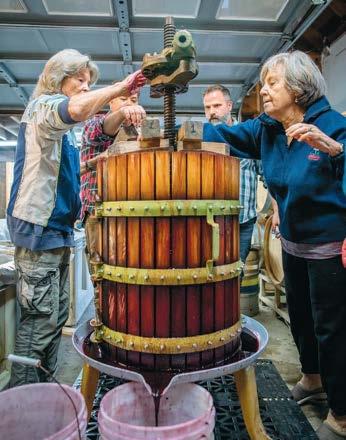
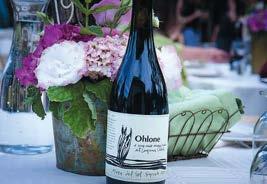
ly. “At the time it was my opportunity to really make wine and have some creative direction on where the wine was going without spending a bunch of money on a winery,” he says, adding, “It was a cool way to meet a lot of really interesting people.”
Friendship is key in making the co-op work. The 10 families that belong have two main events each year. The first is a spring potluck to discuss the varieties and styles they want to choose for that year’s vintages, usually two to four wines. In fact, Kubo estimates only about half the grapes they source are from actual wine industry contracts, and the other half from “super random” connections. Oftentimes a friend of a friend lives somewhere and knows someone, which results in a special opportunity.
For example, Rendler-Bregman remembers that on a writing retreat in Ireland 10 years ago, she discovered that one guy on the trip owned a vineyard in the Silver Oak region of Napa. He told her to just email his son, who managed the vineyard, and tell him that she wanted to buy some grapes. “That was one of the best vintages we’ve ever made,” says Kubo of the Cabernet Sauvignon. And ultimately, the fruit that the group works hard to source, either from known contacts, serendipity or networking, is just one example of the meticulous attention to detail that its finished wine shows. “You can’t make good wine from lousy fruit; it makes a huge difference,” she says.
The second event is a post-harvest potluck to celebrate the members’ efforts. And even though these are the only steadfast events on the calendar, casual tastings and social gatherings also occur. “During harvest we see each other all the time,” says Kubo. The work that is required varies, as people have different schedules and daily demands. But the participation hours are hardly used as collateral, or tracked by anyone. Again, the power of the co-op is that “in the long run it all works out,” says Kubo. It is the friendship (and quality fruit and experienced winemaking) that makes the wine taste that much better. “You can have a great product, but it’s really about the people,” adds Rendler-Bregman.
After all these years, she says, “Mike is the best thing that has happened for the group so far! He is a match made in heaven, so fabulous, so devoted, so fantastic, so knowledgeable.” The Bregmans themselves are no longer part of the co-op, but they’re grateful to see it continue. “This is the second harvest we have not been a part of, and it still feels strange,” she says. “It ran its course with me and my husband, and now it’s time for the next generation. It is wonderful to see that it’s still going.”
Amber Turpin is a freelance food and travel writer based in the Santa Cruz Mountains.
TRY THIS AT HOME: Redwood+Vine is not currently looking for new members, but the winemaker would be happy to answer questions by email: michael.dy.kubo@gmail.com









